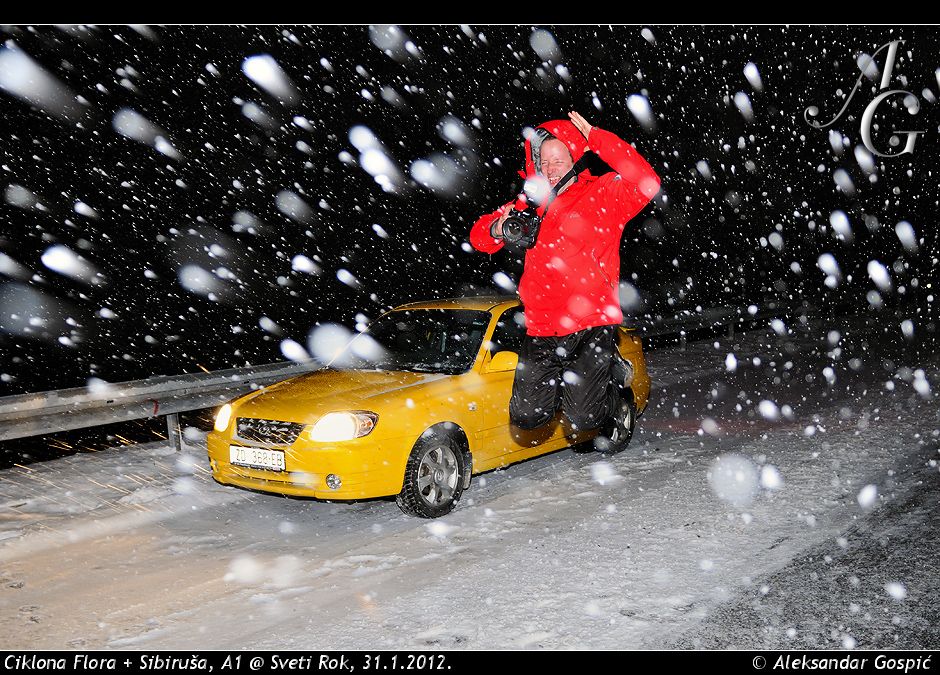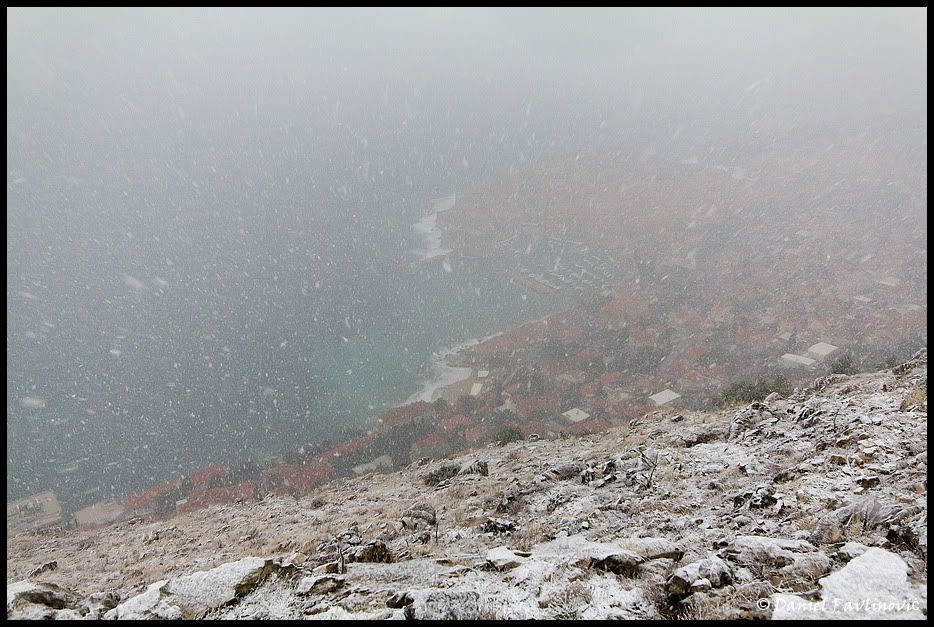Late February and early March has brought two prominent winter episodes. First, in late February cyclone Richard brought lots of snow east Slavonia, and then in early March storm Snjezana has created many problems in the Adriatic.
In the second half of February was suspended three week stable, dry and above average warm weather. First, the middle of the Mediterranean cyclones Patricia (February 16 to 18) brought in some places and more abundant rainfall, and snow in the mountains after three weeks of winter without snow. Plentiful rain with this cyclone crashed in the north and south of the Adriatic. Poljane above Icici received 89 mm of rain, Klan 71 mm, 49 mm Podmurvice River. The cyclone has brought even more rain in the area of Dubrovnik and its surroundings, where there were showers and thunderstorms. At the station Gruda has fallen in two days 107 mm, the station Dubrovnik Ćilipi 117 mm, and the city of Dubrovnik in two days dropped 63 mm of rain, more than half the monthly average for February (105 mm).
More winter atmosphere in late February issued a cyclone Richard (February 20 to 25). 21st February is the larger portion of the falling snow, but fell only small amounts. With Richard that took hold over the Ionian Sea at the time was influenced by the cold eastern anticyclone, and the last Week January marked coldness, and the Adriatic bora and gale. On Zavižanu on 23 February maximum temperature was only -11 ° C and minimum -15 ° C. With a gale storm of 68 km / h Wind Chill was -30 ° C. Cloudnes was on the East Slavonia and southern Adriatic, where the impact of the cyclone intensified 24th and 25, February. Snow was falling and in central and southern Dalmatia. 26th February Mljet was measured 2 cm of snow, Ploce 3 cm, and the snowflakes fluttered and of Split, Makarska and Dubrovnik.
In Eastern Slavonia in two days (24.-25.2.) Abundant snow fell that winter. Most of it was in Gradištu 36 cm, as measured by the 26th February, which was the biggest snow in our country, two days before the end of February and the winter climate. On Zavižanu the snow in those days kept at 35 cm. An interesting episode of the snow and they were great differences in the amount of snow in a small space. The south-eastern part of Slavonia, and the area east of the line of Vukovar-Privlaka-Županja received the most snow. Vukovar was that morning measured 35 cm and 27 cm in Zagreb. The falling snow was very dry, and fell at a temperature of -6 to -3 ° C. Interestingly, while the thick snow covered in East Slavonia, about sixty kilometers west was clear. Only a few inches of new snow fell in central and northern parts of the interior, and in Gorski Kotar and Lika. This episode of snow at the end of February we have bypassed the interior Northwest and northern and central Adriatic. Next to the last day of February, Gradište is a morning temperature of -12.2 ° C was the coldest place in the country. And the last day of February the coldest was in the East Slavonia, with temperatures ranging from -8 to -12 ° C, while the rest of the interior of the scale of -3 to -1 ° C, and the higher mountains of -6 to -8 ° C.
New winter episode was the beginning of March brought the low cyclone Snježana. On the Adriatic coast on the first day of March blew strong wind that has brought many problems, from Istria to Dalmatia.
On the Krk bridge strikes and storms are reaching 190 km / h. . The coastal storm is caused by failure of the transmission lines, and about 3500 consumers from Senj to St. Mary Magdalene was with no electricity.
Snow situation in Slavonia - morning 26.2.2011.
















































